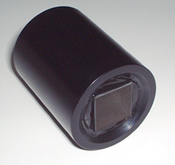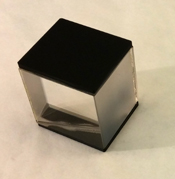Glan-Taylor Polarizers
Air-spaced crystal polarizers with high optical power handling
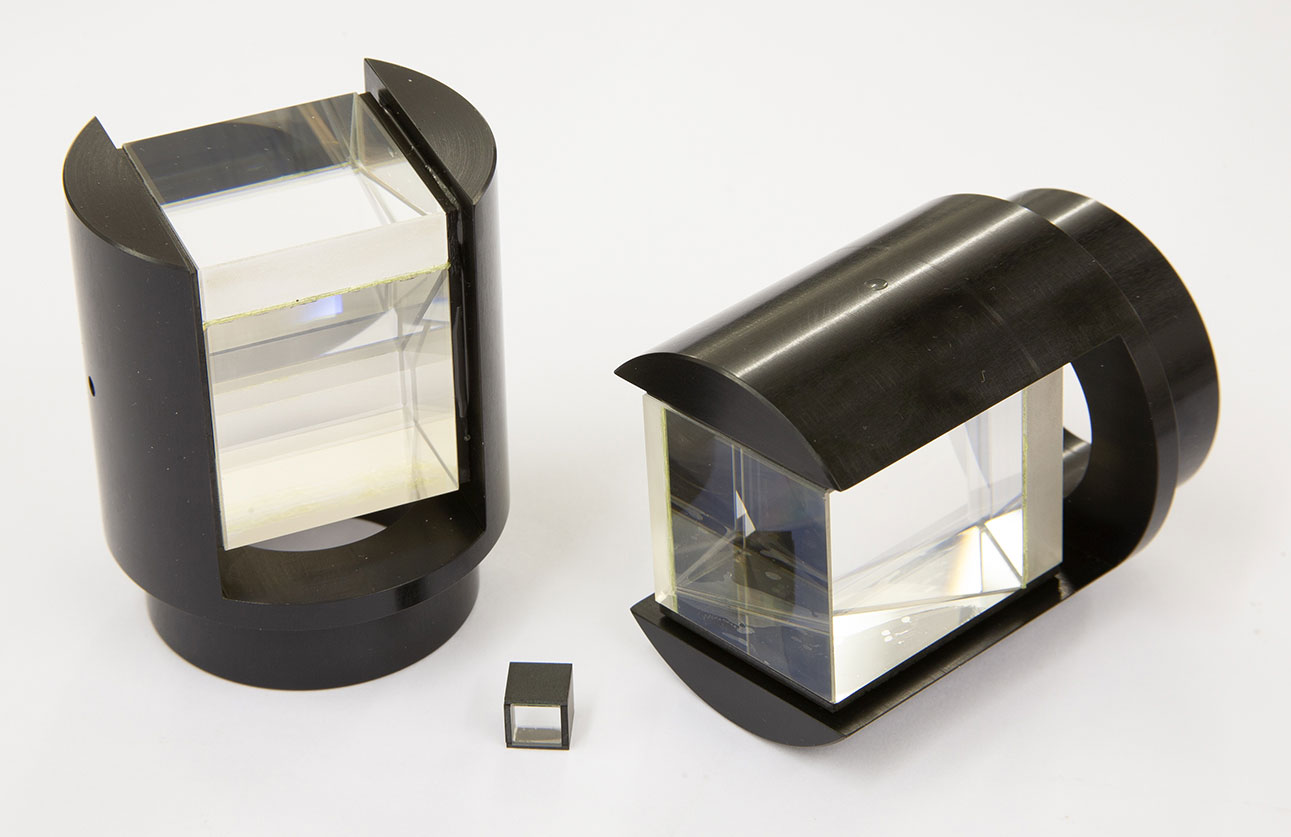 The Glan-Taylor design produces a high extinction ratio polarizer with low reflection losses and a high power handling capability. It is therefore particularly useful for polarizing laser light, with the further advantages that there is no transmission deviation or offset, and that a wide spectral range can be polarized.
The Glan-Taylor design produces a high extinction ratio polarizer with low reflection losses and a high power handling capability. It is therefore particularly useful for polarizing laser light, with the further advantages that there is no transmission deviation or offset, and that a wide spectral range can be polarized.
Product Specification
| POLARIZER | GT10 | GT12 | GT15 | GT18 | GT20 |
| APERTURE (mm) | 10 | 12 | 15 | 18 | 20 |
| WIDTH (mm) | 11 | 13 | 17 | 20 | 22 |
| HEIGHT (mm) | 10 | 12 | 15 | 18 | 20 |
| LENGTH (± 1.0mm) | 11 | 15 | 18 | 21 | 24 |
| TRANSMISSION RANGE | ------------------- 0.25 - 2.5µm ------------------- | ||||
| EXTINCTION RATIO | 10-5 | 10-5 | 10-5 | 10-6 | 10-6 |
| TRANSMISSION UNCOATED | ----------------------- 88% ----------------------- | ||||
| MAXIMUM BEAM DEVIATION | 3 min | 3 min | 3 min | 2 min | 2 min |
|
MAXIMUM OPTICAL POWER PULSED |
------------------- 200MW/cm2 -------------------- | ||||
|
MAXIMUM OPTICAL POWER CW |
-------------------- 300W/cm2 --------------------- | ||||
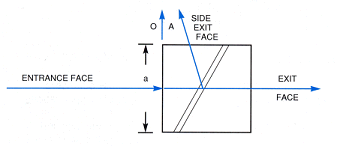
LEYSOP supplies GT model Glan-Taylor polarizers with apertures from 10-20mm and larger to special order. Side faces are fine ground as standard, which is adequate to disperse the internally reflected polarization state. Polished side exit faces are provided if required and are recommended for all high power applications. The standard interface angle makes the polariser suitable for operation across a wide wavelength range. Other interface angles can be ordered to cover requirements across the full transmission range of calcite from 0.2 - 2.5µm. Please note that because of the absorption in calcite, transmission for most Glan-Taylor polarizers is reduced below 350nm. The main optical surfaces are polished to a flatness of better than λ/8 at 0.63µm. Please be aware though that side exit faces are not able to be polished to this same high specification because of the weakness of this face in calcite.
Glan Taylor Polarizer With
Orthogonal Output Side Exit Escape Windows
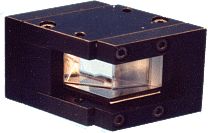
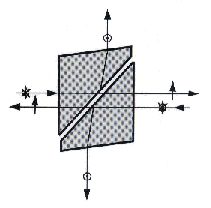
The Glan Taylor polarizer produces a high extinction ratio with low reflection losses and a high power handling capability. It is therefore particularly useful for polarising laser light. For some applications it is more convenient however to have the S and P polarized beams exit the device at 90° to each other. In this novel design, two specially angled side exit windows give orthogonal output escape beams and the mechanical mount gives a high degree of protection to all four optical surfaces. Another advantage of the angled side exit faces is that these are able to be polished to a much higher specification than the standard Glan-Taylor design.
Specification
| Polarizer | GLBS 10 | GLBS 12 | GLBS 16 | ||
| Aperture | 10 mm | 112 mm | 15 mm | ||
| Spectral Range | --------------- 350 - 2500nm --------------- | ||||
| Extinction Ratio | ------------------- ~10-5 ------------------- | ||||
| Maximum Beam Deviation | ------------------- 3 min ------------------- | ||||
| Transmission | --- 88% (uncoated) 93-95% (ar-coated) --- | ||||
| Surface Flatness | ---------------- λ/6 @ NaD ---------------- | ||||
| Maximum Optical Power | -- 150W/cm2 (av) - 300MW/cm2 (pulsed) -- | ||||
| Overall Dimensions: | |||||
| Height | 23 mm | 25 mm | 28 mm | ||
| Width | 24 mm | 27 mm | 30 mm | ||
| Length | 40 mm | 48 mm | 55 mm | ||
Glan-Taylor Polarizer With Brewster Angled Faces
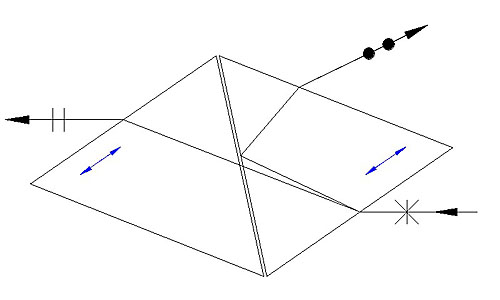
This special version of the Glan-Taylor polarizer is cut such that the P-polarization (extra-ordinary ray) intersects all four optical faces at Brewster's angle, thus ensuring a minimal insertion loss over a wide operating wavelength range. Transmission in fact is approaching 99% for the P-polarization and extinction ratio is exceptional, exceeding that of the more conventional cut Glan-Taylor.
One disadvantage of the Brewster cut Glan-Taylor polarizer, as you can see from the above diagram, is that it produces a reasonably large offset in the beam line. This is typically around 5 to 7mm depending on the size of the device and because of the refraction at the Brewster interfaces, it is also wavelength dependent.
Nominally available apertures are 8, 10 or 12mm and the polarizer can be supplied in a mount if required. As always, Leysop are happy to discuss your precise requirements for these and other components so please contact us.
Glan-Taylor Polarizing Beam Combiner
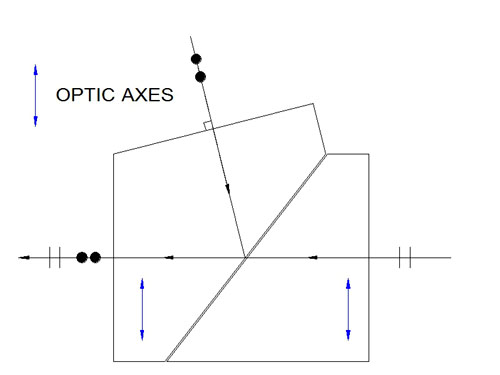
This special version of the Glan-Taylor polarizer is cut such that the rejected S-polarized light exits in a direction parallel to the side exit face normal. More importantly, if the beam direction is reversed such that light is entering at the side face, it suffers no refraction at the surface and hence there is no dispersion of the position of the beam in the polarizer. This makes it possible to use this design for combining beams of orthogonal polarization and across a range of wavelengths without losing colinearity of the combined beams.
A range of sizes comparable to our conventional Glan-Taylor polarizers is avaialble but as the prism sizes are larger, there is a modest premium on the price for a given aperture. Please contact us for further information.
